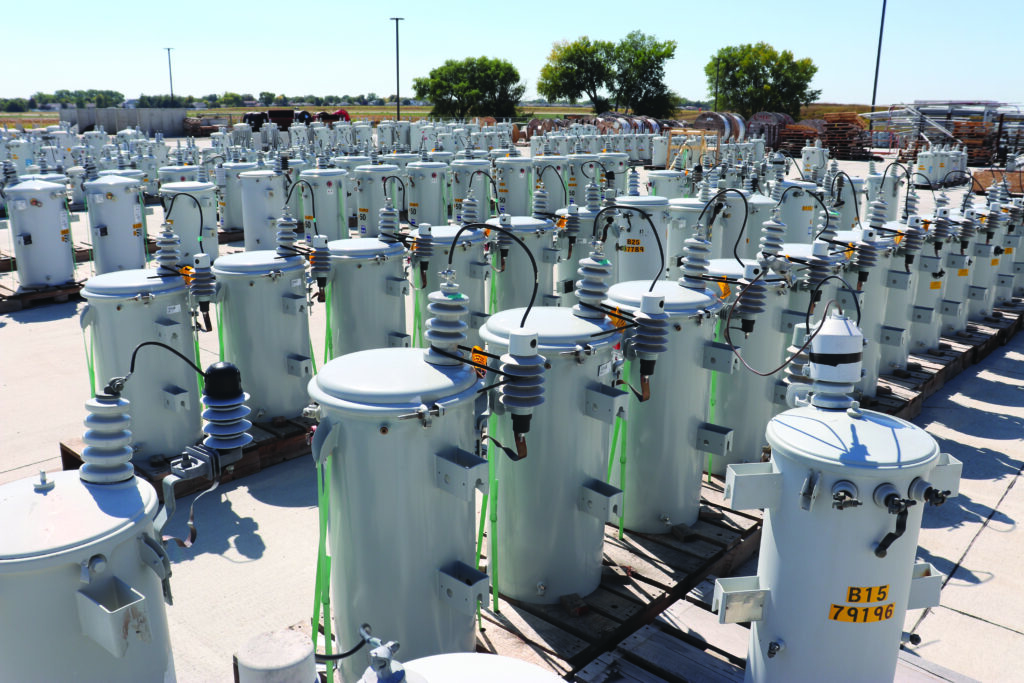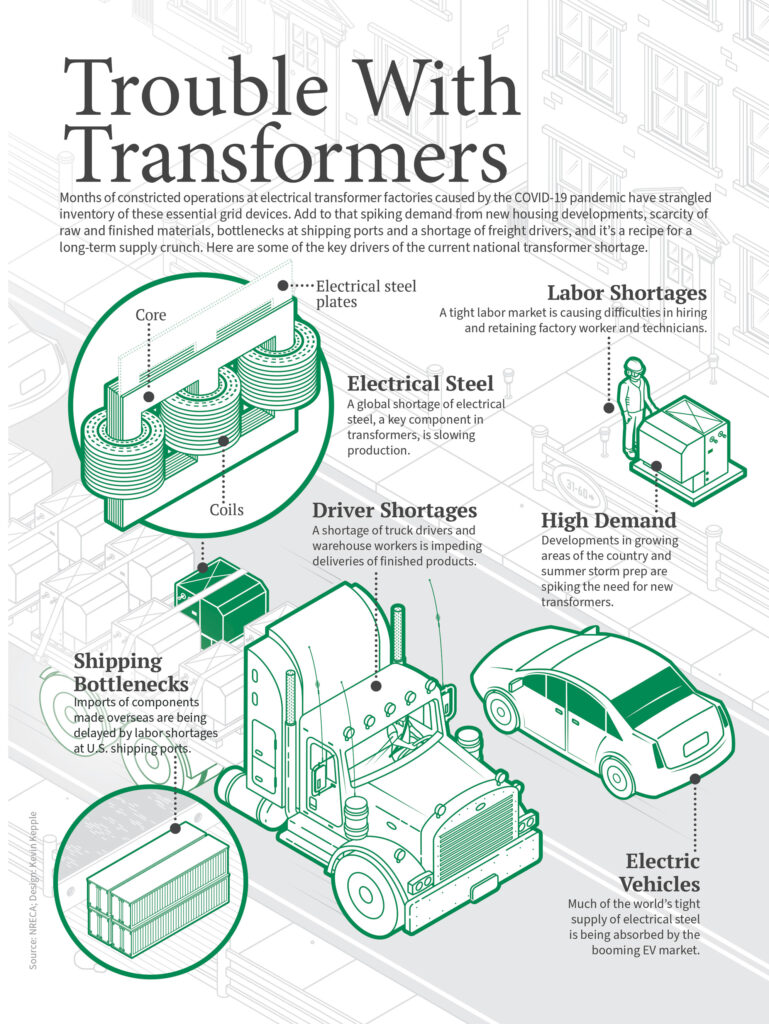Dave Rosno never imagined he’d have such difficulty purchasing 5/8-inch by 14-inch bolts.
“It’s something that we use everyday,” he said. “What normally would be in stock at a warehouse is taking up to 12 weeks to get,” he said.
Bolts are just the tip of the iceberg, according to Rosno, who serves as Loup’s Chief Storekeeper. The biggest problem is not knowing what the next problem is going to be.
“You don’t know there’s going to be a problem with the supply until you go to order and then it’s almost like a panic,” he said.

Across the country, the supply of critical equipment and materials is decreasing while demand continues to grow, widening the gap between what is available and what is needed.
Electric utilities are experiencing shortages of distribution transformers, meters, conductor materials, and bucket trucks due to the ongoing economic impacts from the COVID-19 pandemic.
Delayed investments and expanding lead times for new equipment caused by a lack of materials and labor will continue to compound the problem—possibly for years to come.
Korey Hobza, Vice President of Engineering, said Loup’s transformer suppliers forecast a shortage and alerted Loup which consequently ordered extra transformers.
We’ve been able to get the transformers we need,” Hobza said. “But the lead times and prices have increased significantly.”
Loup is planning a new Columbus substation. The timeline for a distribution transformer increased from 48 to 110 weeks. Residential transformers have an average lead time of about 45 months. He said some companies are offering bids that are subject to change based on the delivery date.
In a recent survey of public power utilities, 80 percent reported having either pad-mounted or pole-mounted distribution transformer inventories that are lower today than they were in 2018.
Utilities are discussing the issue with the federal government, working with manufacturers, and with the entire sector to encourage additional production and sharing of transformers.
Shop and Transportation Superintendent Mark Hanel is feeling the same pressures as Hobza and Rosno.
He ordered two dump trucks earlier this year with an estimated delivery date of the first quarter of 2023. That date has since been pushed to the end of next year.
Some vehicle orders were simply cancelled outright. The cost is “uncertain at best” for a few trucks still on order. On the bright side, Hanel said his team has been able to access the parts needed to maintain the District’s existing fleet.
Rosno’s strategy to deal with ongoing supply chain issues is to shop around and find new vendors. He is also asking vendors what they are carrying for other utilities to see if Loup can adjust and use slightly different products — maybe a standard pole instead of a custom-drilled pole.
Hobza said that strategy is working for engineering as well — purchasing an “off-the-shelf” transformer with specs that closely match Loup’s means better price and availability.
On top of simply finding supplies, Rosno has to weigh product cost against the delivery lead time.
“It’s not always about price at this point,” Rosno said. “It’s if we will get it at all.”
He has been able to maintain inventory by shopping around — often getting lucky and stumbling upon vendors with enough inventory at the right time. Sometimes he orders from one vendor while waiting on another. But, more inventory is always better than not enough.
“We want to be prepared,” he said. “We don’t want to run ourselves short in case of a storm.”


